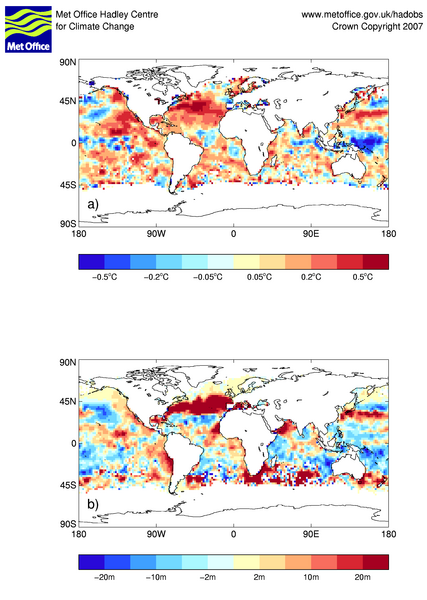References
When using the data set in a paper, the following is the correct citation to use:
Palmer M. D., K. Haines, S. F. B. Tett and T. J. Ansell (2007), 'Isolating the signal of ocean global warming', Geophys. Res. Lett., 34, L23610, doi:10.1029/2007GL031712.
The following papers are cited in the text above:
- Ishii, M., Kimoto, M. and M. Kachi (2003), 'Historical ocean subsurface temperature analysis with error estimates', Monthly Weather Review, 131, 51-73.
Levitus, S., Antonov, J.I. and T.P. Boyer (2005), 'Warming of the World Ocean, 1955-2003', Geophysical Research Letters, 32, doi:10.1029/2004GL021592.
Polyakov, I.V., Bhatt, U.S., Simmons, H.L., Walsh, D., Walsh, J.E. and X. Zhang (2005), 'Multidecadal variability of North Atlantic Temperature and Salinity during the Twentieth Century', Journal of Climate, 18, 4562-4581.
Lyman J. M., J. K. Willis, G. C. Johnson (2006), 'Recent cooling of the upper ocean', Geophysical Research Letters, 33, L18604, doi:10.1029/2006GL027033.
|


